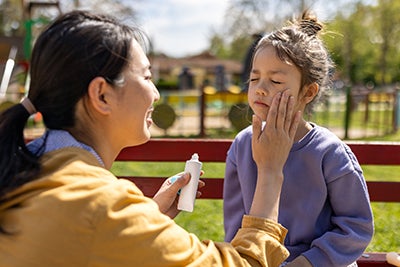Debunking UV Safety Myths
July 29, 2024
Debunking Common UV Safety Myths
There are numerous myths and misconceptions surrounding sun safety that often lead people astray when it comes to protecting themselves from harmful sun exposure. It’s crucial to debunk these myths because relying on incorrect information can put our skin at risk and lead to sunburns, premature aging, and even skin cancer. Here are five common myths surrounding UV safety:
Myth #1: I Don't Need Sunscreen on Cloudy Days
This is a common misconception. UV radiation can still penetrate through clouds and cause skin damage. Clouds may filter some sunlight but don't fully block the UV rays that can harm our skin. Therefore, it's essential to wear sunscreen even on overcast days to protect against these invisible rays.
Myth #2: Darker Skin Tones Don't Need Sun Protection
While it's true that melanin, the pigment responsible for skin color, provides some natural protection against UV radiation, it does not make darker skin completely immune to the sun's harmful effects. UV rays can still penetrate the skin, leading to sunburn, premature aging, and an increased risk of skin cancer. Regardless of skin tone, everyone should use sun protection.
Myth #3: Using Sunscreen Alone Is Enough
Sunscreen is essential but has limitations. It absorbs or reflects UV radiation but may not block all rays. It can wear off due to sweat, water, or prolonged sun exposure. To enhance protection, combine sunscreen with seeking shade, wearing protective clothing, and using accessories like hats and sunglasses. This multi-faceted approach offers better protection.
Myth #4: Sunburns Only Happen During Peak Hours
Sunburns are not limited to peak hours of sun exposure. While the sun's rays are strongest during that time, typically between 10 am and 2 pm, UV radiation can still cause sunburns at other times, especially in high-altitude or equatorial regions. Factors like location and reflective surfaces affect UV intensity. Thus, sun protection is essential throughout the day to minimize the risk of sunburns, premature aging, and skin cancer.
Myth #5: Indoor Tanning Beds Are a Safe Alternative to Natural Sunlight
Indoor tanning beds emit carcinogenic UV radiation, increasing the risk of skin cancer and accelerating skin aging. The intensity of UV radiation in tanning beds can be stronger than the midday sun, causing sunburns and eye damage. Obtaining a base tan through indoor tanning offers minimal sunburn protection but doesn't outweigh the risks. It's best to avoid tanning beds altogether.
Myth #6: A Base Tan Protects Against Sunburn
Some people believe that getting a base tan will protect them from sunburn. However, a tan is actually a sign of skin damage. While a base tan might provide a small amount of protection, it is not a substitute for proper sun protection methods such as sunscreen, protective clothing, and shade.
Myth #7: Sunscreen with a Higher SPF Provides Double the Protection
SPF, or Sun Protection Factor, measures the level of protection against UVB rays. However, higher SPF numbers don't equate to double the protection. For instance, SPF 30 blocks about 97% of UVB rays, while SPF 50 blocks about 98%. It's more important to apply sunscreen generously and reapply it regularly than to rely solely on a high SPF number.
By debunking myths and embracing proper sun safety practices, you can protect your skin and promote a lifetime of healthy sun habits. Let's prioritize our well-being and enjoy the sun safely. Remember, the best protection comes from a combination of sunscreen, protective clothing, and smart sun behaviors. Stay informed and stay safe under the sun!
If you experience severe sunburn, including symptoms like blistering, swelling, severe pain, or fever, it’s crucial to seek medical attention. Extreme sunburn can lead to complications that require professional care. Don't hesitate to visit a doctor for proper evaluation and treatment.
